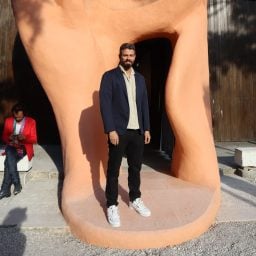Simone Leigh’s U.S. pavilion is drawing lines around the courtyard during this week’s Venice Biennale preview. But those who don’t manage to catch the show-stopping presentation in the Giardini will have several other chances.
The presentation, which features 11 new works, will form the basis of Leigh’s first-ever survey exhibition, at the Institute of Contemporary Art, Boston, which commissioned the pavilion, next March. It will then embark on a national tour with a stop at the Hirshhorn Museum and Sculpture Garden in Washington, D.C., in the fall and winter of 2023 and 2024, followed by a joint presentation at the Los Angeles County Museum of Art and the city’s California African American Museum in spring and summer 2024.
The ICA Boston’s chief curator, Eva Respini, who organized the Venice pavilion, will curate the traveling show. It spans 20 years of Leigh’s practice.
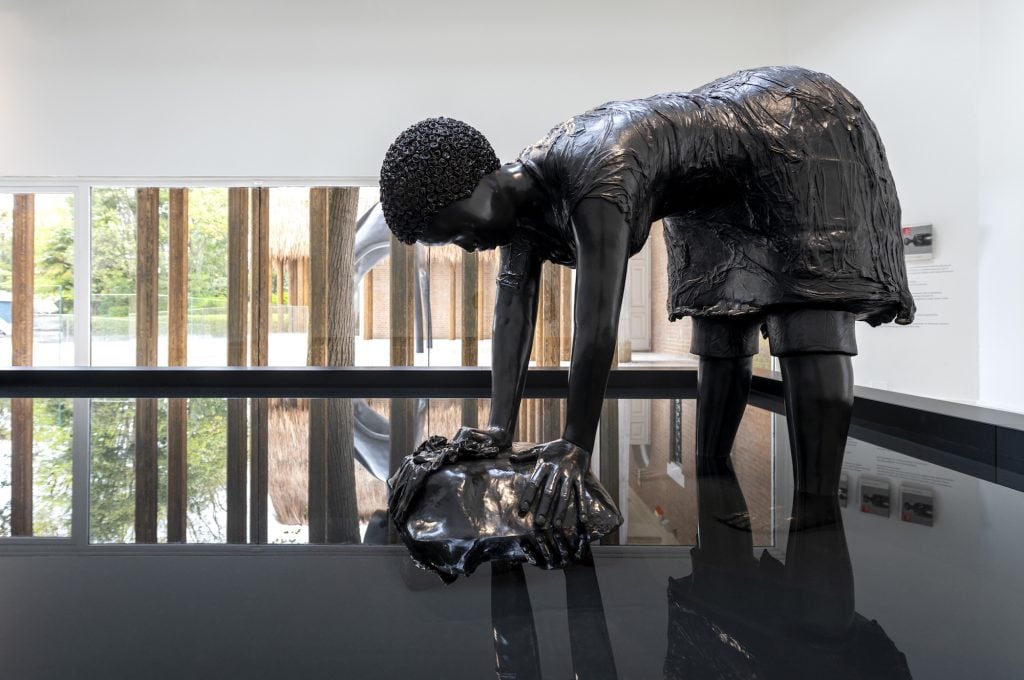
Simone Leigh, Last Garment (2022). Courtesy the artist and Matthew Marks Gallery. Photo by Timothy Schenck. © Simone Leigh.
For Venice, Leigh created a sweeping body of work about the Black female subject that draws on references ranging from ritual performances of the Baja peoples in Guinea to early Black American material culture from the Edgefield District in South Carolina and the 1931 Paris Colonial Exposition.
On view is a towering bronze female figure with a disc in place of a head (which barely arrived in time for the opening); a statue of a washerwoman at work that harkens back to stereotypical 19th-century postcards used to promote tourism in Jamaica; and the artist’s first ever portrait, of the writer Sharifa Rhodes-Pitts.
What is perhaps the show’s best and most memorable work will not travel, however. Leigh transformed the U.S. pavilion’s facade—a neoclassical Jeffersonian brick building with white columns—by covering it with thatch roofing that resembles a 1930s West African palace and encircling it with wooden poles.
The installation—titled, appropriately, Facade—draws on the 1931 Paris Colonial Exposition, a six-month event in which Western nations touted their colonial empires by constructing replicas of far-flung local architecture for public consumption. (It may not be a stretch to consider the work as a sly critique of the Biennale itself, another world fair that offers up bite-size visions of national cultures.)
The pavilion, titled “Sovereignty,” also presents a 26-minute film by Leigh and Madeleine Hunt-Ehrlich that traces the creation of the works on view, with close-cropped shots of the artist crimping, braiding, and stepping on clay as if it were grapes being turned into wine. The film ends with a long shot of Leigh burning a papier-mâché and raffia version of a ceramic work, Anonymous, on view in an earlier gallery. That work—which depicts the unidentified Black female subject of a racist 1882 souvenir photograph by a white photographer—was reportedly so difficult for Leigh to live with in the studio that the burning of its twin served as a kind of cathartic distancing ritual.
The tight show is so full of historical and cultural references—about visible and invisible labor; how Black women have been depicted and have depicted themselves; European American appropriation of African culture and the endurance of African iconography in the diaspora—that it might require a full book to explain them all. Fortunately, the forthcoming museum exhibition will be accompanied by a major monograph.
“In order to tell the truth,” Leigh said in a statement, “you need to invent what might be missing from the archive, to collapse time, to concern yourself with issues of scale, to formally move things around in a way that reveals something more true than fact.”
See more images of “Simone Leigh: Sovereignty” below.
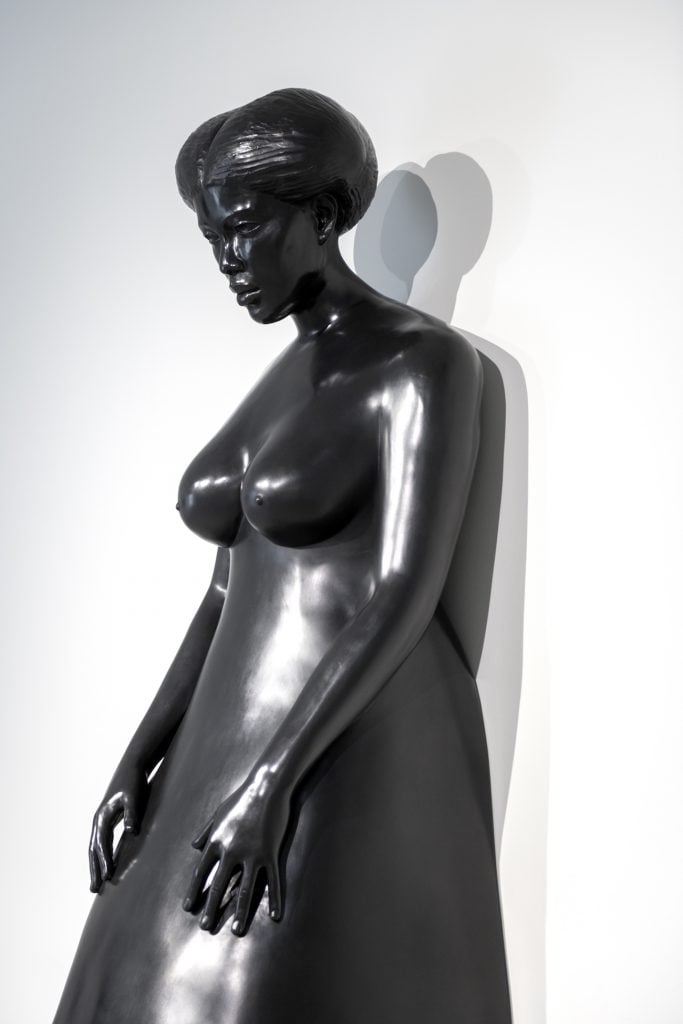
Simone Leigh, Sharifa (detail) (2022). Courtesy the artist and Matthew Marks Gallery. Photo by Timothy Schenck. © Simone Leigh
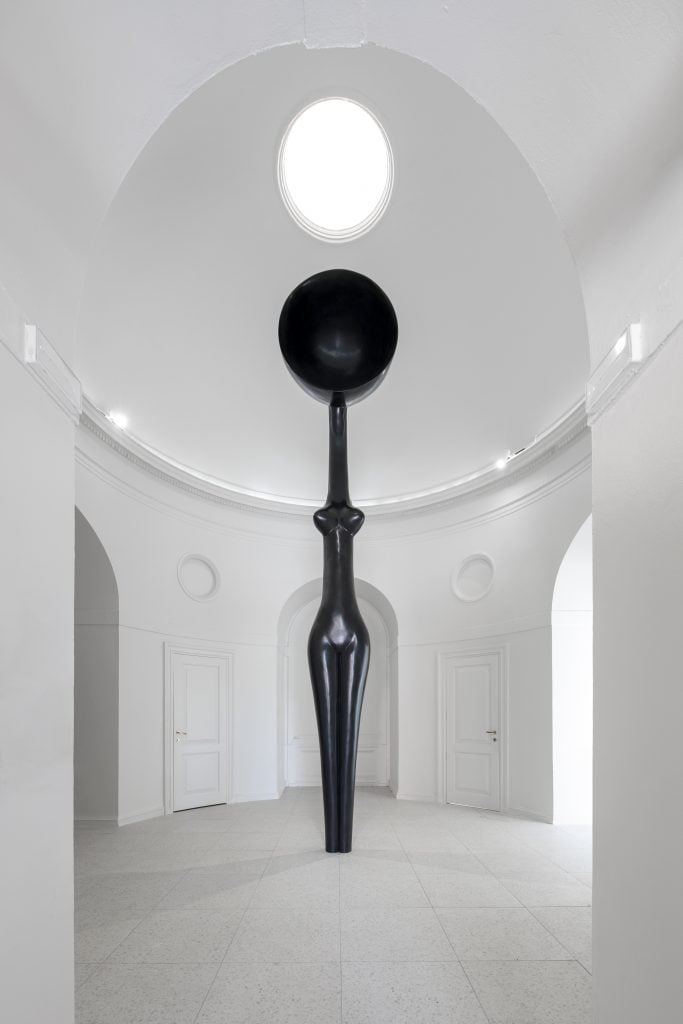
Simone Leigh,Sentinel (2022). Courtesy the artist and Matthew Marks Gallery.
Photo by Timothy Schenck. © Simone Leigh.
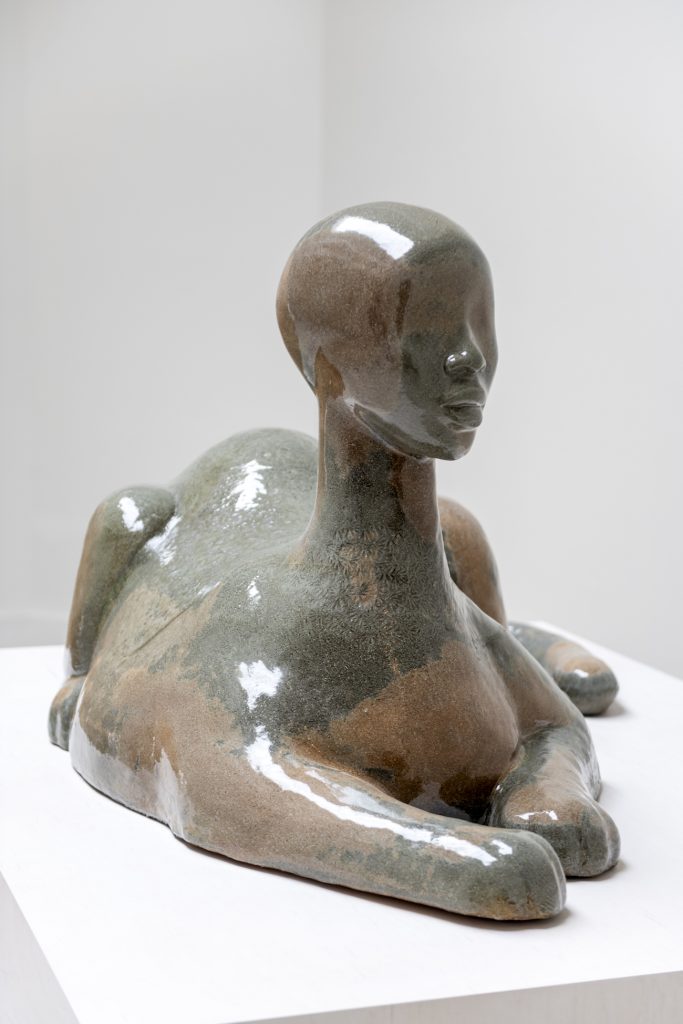
Simone Leigh Sphinx (2022). Courtesy the artist and Matthew Marks Gallery. Photo by Timothy Schenck. © Simone Leigh.
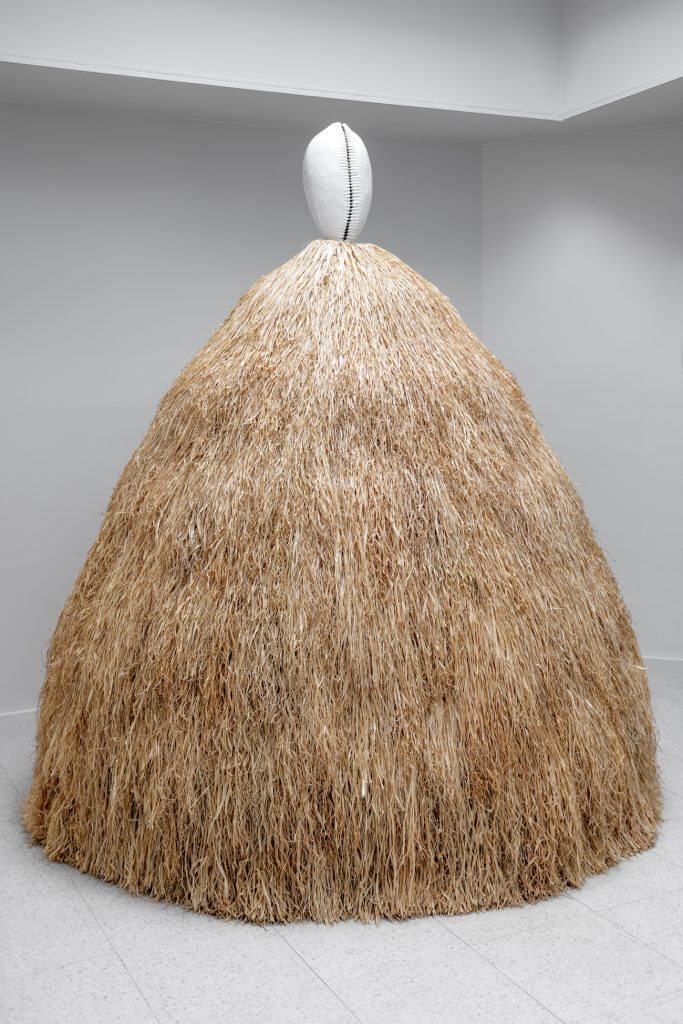
Simone Leigh, Cupboard (2022). Courtesy the artist and Matthew Marks Gallery. Photo by Timothy Schenck. © Simone Leigh.
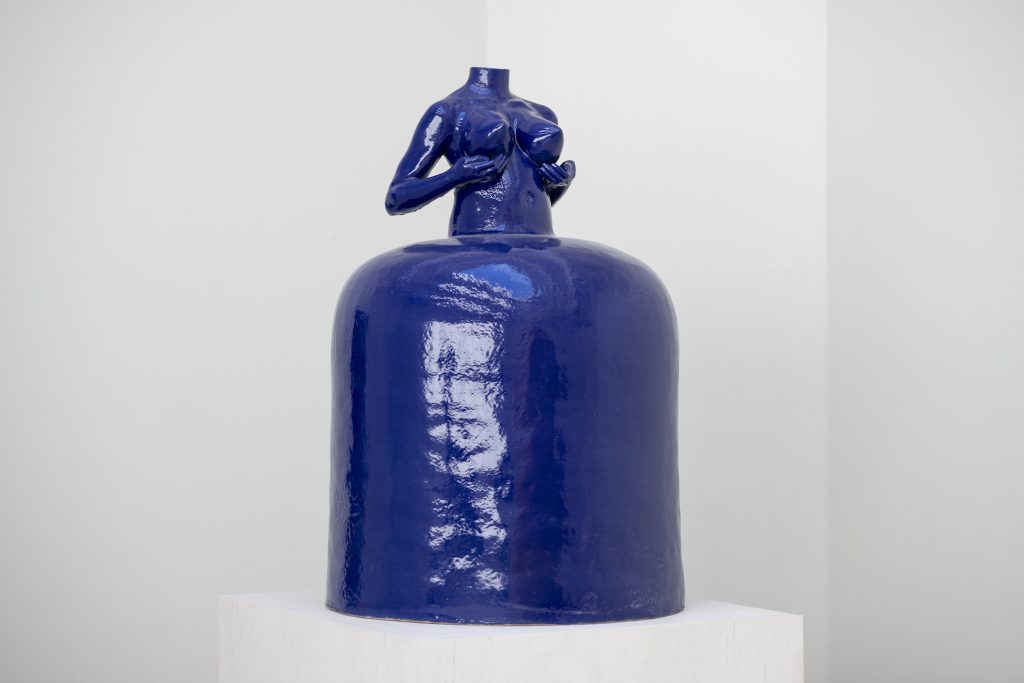
Simone Leigh, Martinique (2022). Courtesy the artist and Matthew Marks Gallery. Photo by Timothy Schenck. © Simone Leigh.
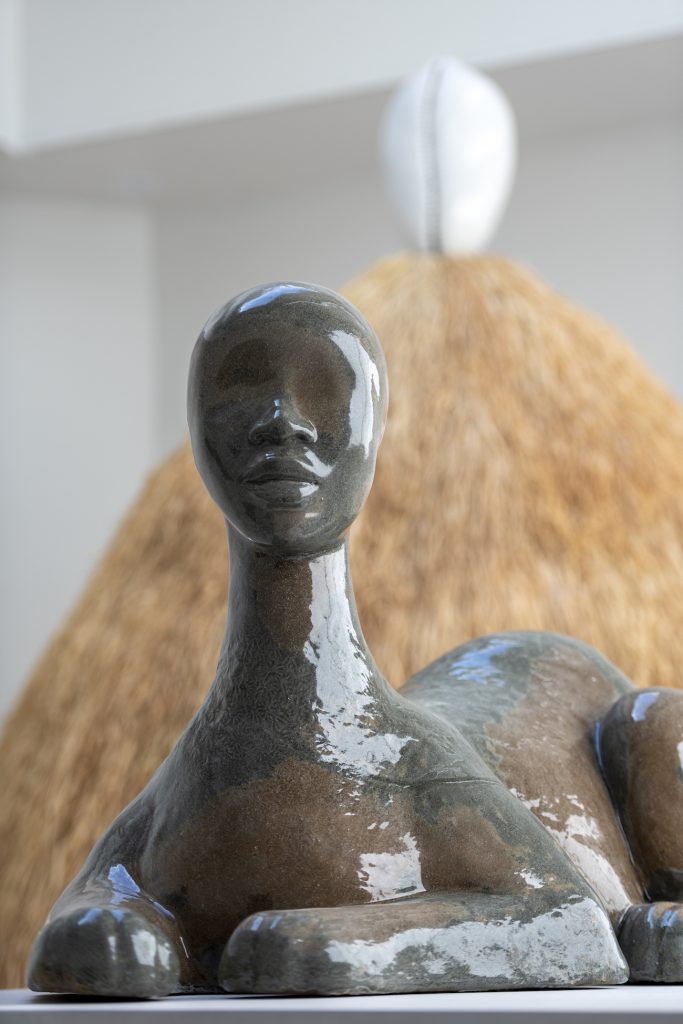
Installation view, “Simone Leigh: Sovereignty.” Courtesy the artist and Matthew Marks Gallery. Photo by Timothy Schenck. © Simone Leigh.
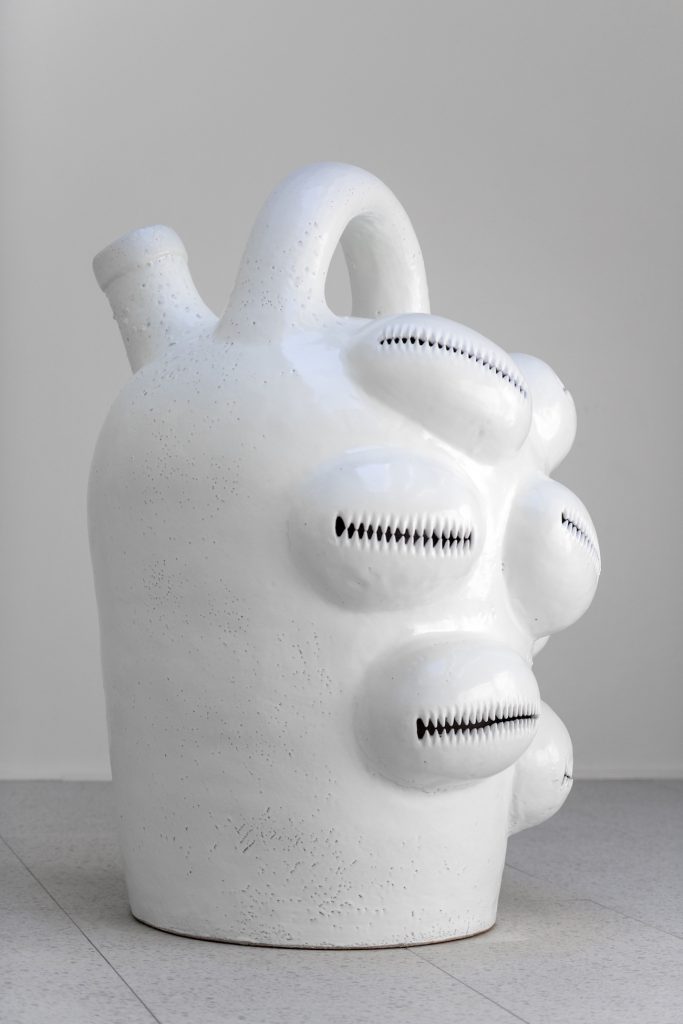
Simone Leigh, Jug (2022). Courtesy the artist and Matthew Marks Gallery. Photo by Timothy Schenck. © Simone Leigh.
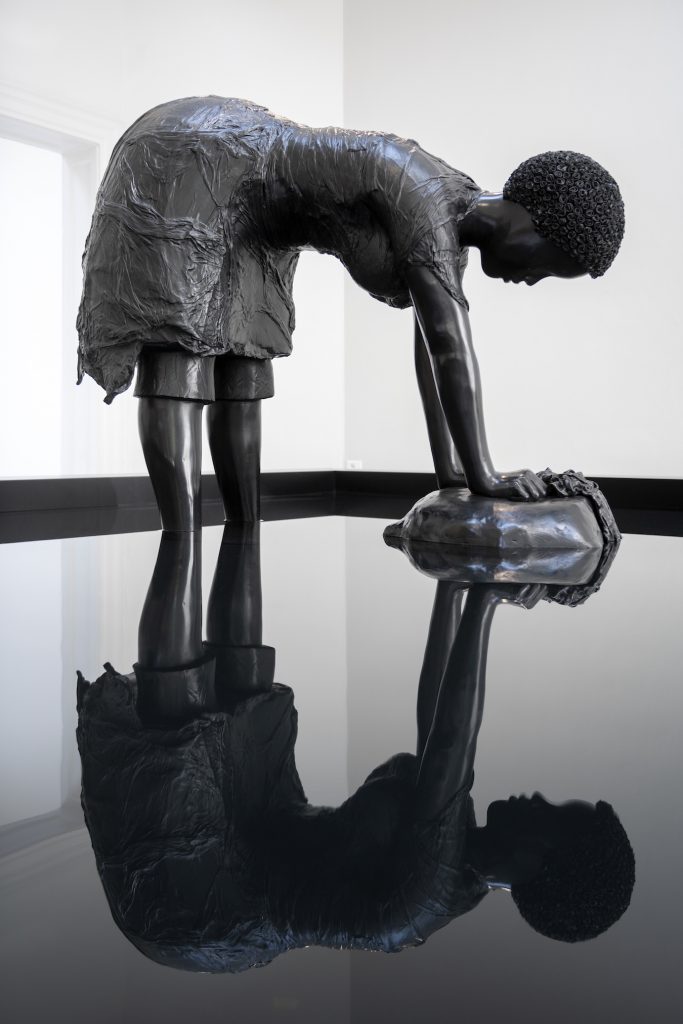
Simone Leigh, Last Garment (2022). Courtesy the artist and Matthew Marks Gallery. Photo by Timothy Schenck. © Simone Leigh.
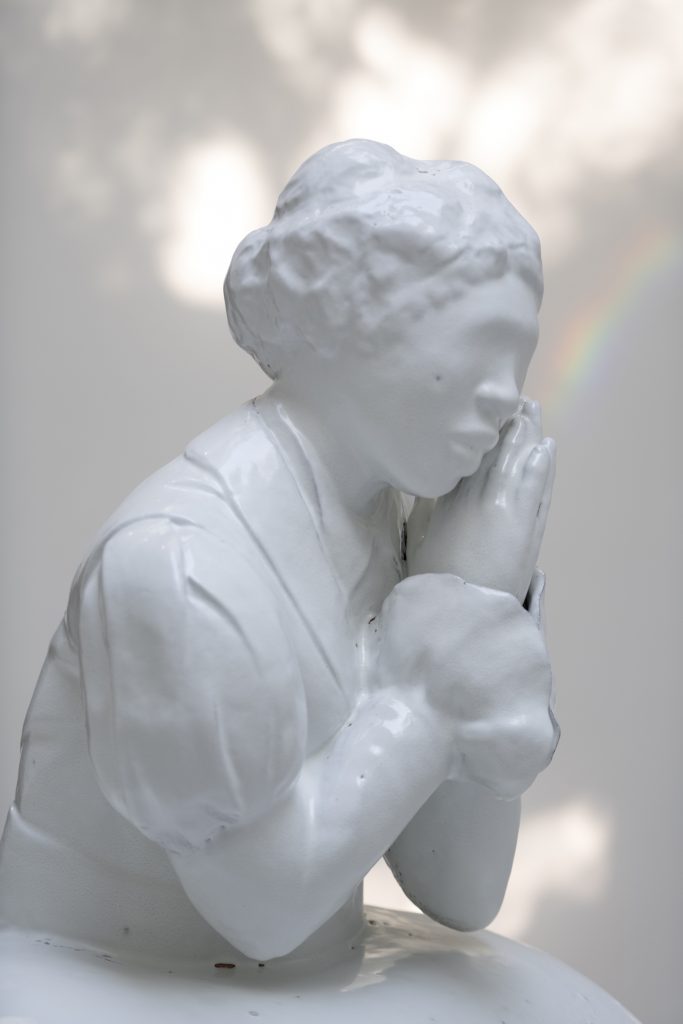
Simone Leigh, Anonymous (detail) (2022). Courtesy the artist and Matthew Marks Gallery. Photo by Timothy Schenck © Simone Leigh.














